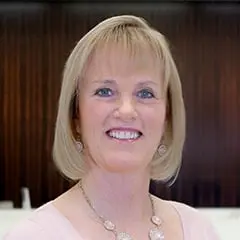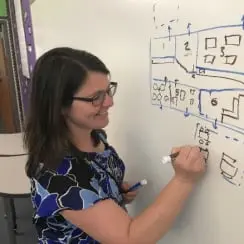 | 1 LU |
 | 1 LU |
Call to Action: Hear proven steps on how to integrate multifunctional and flexible learning environments that encourage adaptability and collaboration; ways to promote active learning and reflection zones through spaces that encourage problem-solving, critical thinking, and self-regulation—key skills for professional success; and opportunities to enhance real-world learning that prepares students for higher education and careers through environments that mimic workplace settings, from maker spaces to project-based learning zones.
Abstract: While schools emphasize hard skills by teaching core knowledge and technical expertise, there remains a critical gap in fostering the soft skills essential for success in professional environments. Current and future workplaces demand critical thinking, adaptability, collaboration, and emotional intelligence—skills that must be intentionally developed through school design. This session will explore how learning environments can be strategically designed to nurture soft skills that prepare students for higher education and professional settings. Attendees will gain insights into design strategies that promote communication, teamwork, resilience, and problem solving to bridge the gap between education and career readiness. By examining real-world applications in K-12, higher education, and workplace settings, this session will illustrate how spatial design can facilitate lifelong skill development.
Case Study: Richmond High School – Designing for Soft Skills Within – the case study of Richmond High School, presenters will explore how flexible, technology-integrated, and wellness-focused spaces cultivate collaboration, communication, and adaptability, equipping students for the workforce. A recent Forbes survey reveals that managers are hesitant to hire Gen-Z workers due to a lack of soft skills, emphasizing the critical need to develop these competencies in schools. By fostering student autonomy and social-emotional learning through dynamic, real-world environments, the design ensures students are better prepared for future success. Regardless of school type, integrating these principles enhances all learning spaces. Attendees can apply these strategies to future projects.
Reference: Elting, L. (2024, December 23). Managers don’t want to hire Gen-Z workers, citing a lack of soft skills—Survey says. Forbes.
Learning Objectives:
Design of Educational Facilities
Aligning Educational, & Community vision with design to support a regenerative mindset for a sustainable and future ready Educational Facility.

With her 25-year education career, Dr. Marilyn Denison has applied her doctoral research in educational leadership to inspire leadership growth, personalized learning, and innovative design experiences. Her journey includes serving as a principal and assistant superintendent, and opening innovative campuses utilizing inquiry-based learning – experiences that proved the importance of BOLD™ in successful transition into any new environment of passionate, interest-based learning. She supports districts in envisioning and creating future-ready learning.

As a senior design leader at DLR Group, Chris has a passion for creating learning environments that enable creativity, exploration, and student success. His design solutions focus on flexibility, adaptability, and sustainability to support teaching and learning for all ages.

Ellen currently serves as Director, Facilities Planning and Construction at West Contra Costa Unified School District. She earned a Bachelor of Fine Arts degree in Interior Design from San Jose State University and has since dedicated her career to the planning, programming, and design of educational facilities.

Carey serves as the Santa Monica-Malibu Unified School District Chief Operations Officer. In this role he manages the Maintenance & Operations, Facility Use and Facility Improvements programs for the 16 school sites in the district. This includes the Bond Program that has totaled close to $900M of facility modernization and construction. In addition to overseeing all projects, he guides facility planning for the district.